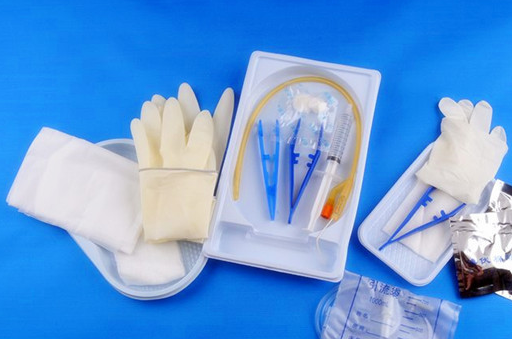Is it really painful to insert a catheter? What we need to know is that the female urethra is only about 3-5cm long, short and straight. If the appropriate size catheter is used, even inserting a catheter in a conscious state should not cause much pain. I’m not a woman, but I suppose it might be much easier than getting a shot. However, for males, since the male urethra is much longer, usually around 16-22cm, with two physiological bends and three narrow parts, the catheter insertion process can potentially cause varying degrees of damage as it passes through these narrow and curved areas. So, males may feel a little discomfort when inserting a catheter while awake, but with gentle and proper handling, most people shouldn’t feel too much pain. However, if the procedure is not done gently and properly, the pain can be very noticeable, even extremely painful!
Now, let’s first have a simple understanding of the mechanism of urination. Urination is controlled jointly by our brain and spinal cord. Without brain control, urine would accumulate in the bladder to about 400ml before automatic urination occurs. Without spinal cord control, urinary retention may occur, leading to the bladder expanding infinitely until rupture. Therefore, for surgeries that last relatively long periods, urinary catheterization is usually necessary. The purpose is to keep the patient’s urine in a controlled range and also to perform necessary tests through the urine.
Moreover, there are significant differences between male and female urethral structures when it comes to catheter insertion, so the experience differs as well. For females, the urethra is short, wide, and straight, making them prone to retrograde urinary infections and relatively easier catheter insertion.
For males, the urethra can be divided into the prostatic, membranous, and spongy parts, measuring approximately 25cm in total length with two bends. Therefore, special attention is required during male catheterization to avoid rough insertion and minimize patient discomfort!
I believe many young males, when undergoing surgery, are not actually afraid of the surgery itself but rather afraid of catheter insertion. This is understandable. However, not all surgeries under general anesthesia require catheterization. For patients undergoing very short surgeries, even under general anesthesia, catheterization may not be necessary. For example, simple surgeries like kidney cyst removal or other procedures that can be completed within half an hour typically do not require catheterization.
However, in practice, most surgeries under general anesthesia do involve catheter placement because doctors cannot guarantee that surgeries will be completed within half an hour, and many patients may be reluctant to urinate immediately after surgery due to pain. Therefore, in actual circumstances, patients under general anesthesia usually have catheters for at least a day.
In essence, the purposes of urinary catheterization during general anesthesia surgeries are as follows:
1. In cases of prolonged surgeries, where urine cannot be naturally excreted due to bladder overfilling, post-operatively, delayed urination may affect normal urination function, potentially leading to urinary retention.
2. After certain surgeries, patients need to remain in bed for a certain period, and many are reluctant to urinate while in bed.
3. For surgeries that require monitoring urine output or are related to the urogenital system.
Additionally, the Chinese Guidelines for the Diagnosis and Treatment of Urological Diseases clearly state that insertion of a catheter for surgical patients should only be done when necessary and should not be a routine practice. For patients who require catheterization, except for specific indications necessitating continuous catheterization, it is recommended to remove the catheter within 24 hours post-surgery.
Therefore, not all surgeries under general anesthesia require catheterization. If your surgery is not extensive and relatively short, and you are particularly afraid of catheter insertion, you can discuss with your attending physician whether catheterization can be avoided (though due to personal and institutional practices, they may not agree as catheterization is considered relatively “safer”).
However, you should consider the corresponding risks beforehand: for instance, if the surgery lasts longer than expected, catheterization may still be necessary; if awakening from anesthesia is slow and self-urination is challenging, a catheter may need to be inserted while awake; or post-surgery, if the wound is painful and you are too delicate to get out of bed for urination but uncomfortable urinating while in bed, a catheter may be necessary while awake.
Therefore, it is crucial to handle catheter insertion with proper and gentle care to minimize pain and discomfort. Specifically for male catheterization, apart from gentle and proper handling, there are other essential operational points to consider.


